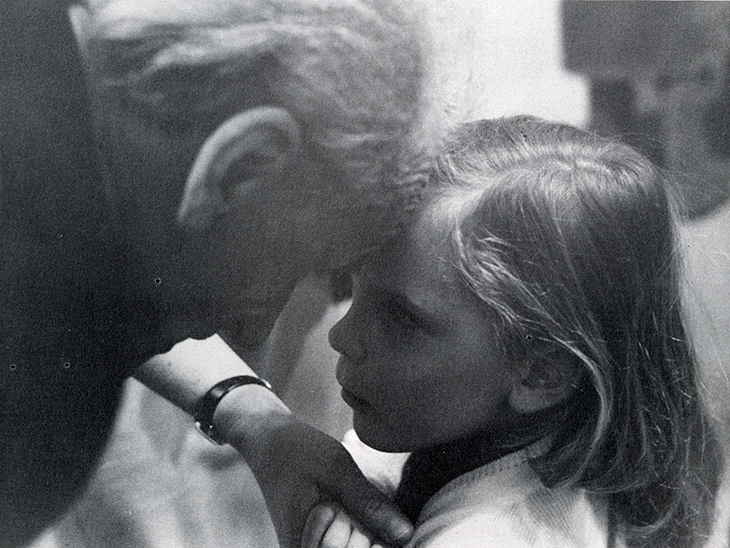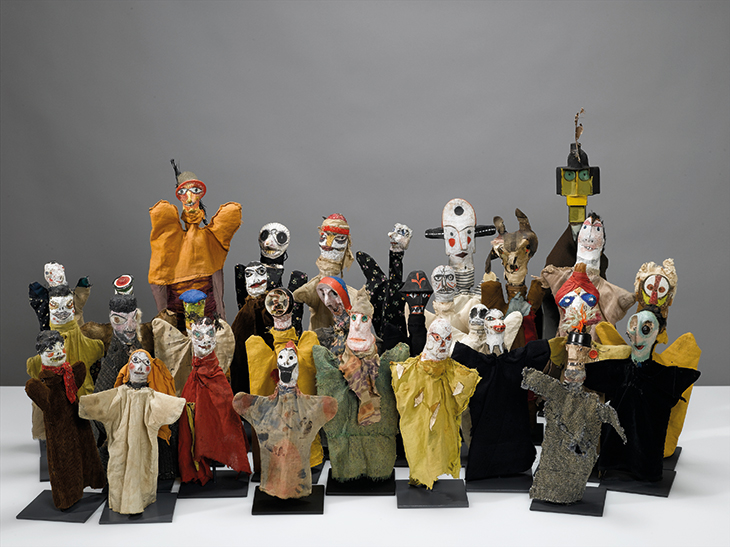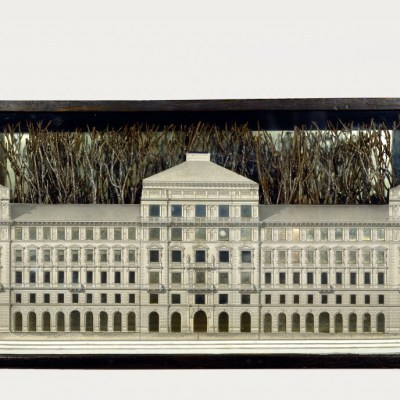From the June 2021 issue of Apollo. Preview and subscribe here.
‘Every book is a children’s book if the kid can read!’ So said the great American comedian Mitch Hedberg, and he was right, of course: age classifications for books ought to be treated with the disrespect they deserve. But Hedberg’s joke prods at a cultural anxiety that remains potent. A recent editorial in the Guardian, for instance, declared – redundantly – that illustrated books are ‘not just for children’.
Visual art has never had this problem. Adults who might never consider reading a graphic novel, let alone an actual book for children, have been innocently enjoying illustrated books in the guise of museum catalogues for years. Books and films are assigned age boundaries; art isn’t, if you discount the occasional (and generally disregarded) age warning label in museums. So the question of what an art made for children might look like is perhaps a moot point: all visual art is potentially ‘for’ anyone. But the fact that well-known artists have attempted to make works and hold exhibitions specifically aimed at a young audience provides a means to think about how we (as adults, or particularly precocious Apollo readers) engage with works of art, and to whom they might speak.
Photograph of ‘A Joseph Cornell Exhibition for Children’ at the Cooper Union, New York in 1972. Photo: Denise Hare

Joseph Cornell was the laureate of childhood in 20th-century art. ‘To the end of his life,’ according to Deborah Solomon, in her spellbinding biography of the artist, ‘Cornell retained an exalted vision of childhood.’ Unlike those of his modernist peers who aped a childlike facture (Joan Miró, say, or Jean Dubuffet), Cornell’s works don’t look as though they were made by children. His intricate three-dimensional collages of found materials, contained within glass-fronted boxes, instead entrap a longing for something gone that is characteristic of how the adult mind frames childhood itself. ‘That is the land of lost content,’ they seem to say. And Cornell himself delighted in how children took to his toy-like work, often leaving them on his front porch for the neighbourhood kids to play with, though what they made of his tense clusters of stuffed birds, Parisian newspapers and Dutch clay pipes is sadly unrecorded.
When Cornell got the chance to stage exhibitions for children, then, he took to it with relish. Two took place during the artist’s lifetime, in 1972, although he lent works on other occasions to the Central Children’s Room of the New York Public Library for temporary displays. The first of these exhibitions, titled ‘A Joseph Cornell Exhibition for Children’, was held in a gallery at the Cooper Union in New York, curated by the art historian Dore Ashton. It consisted of 26 two- and three-dimensional works of art, all hung at an average child’s eye level, about three feet from the ground. All were characteristic of the artist’s work in general; he hadn’t watered it down for his young audience.
A visitor tucks into a brownie at ‘A Joseph Cornell Exhibition for Children’ at the Cooper Union, New York in 1972. Photo: Denise Hare

Most of the guests at the opening were children under 14 from local schools, who roamed the exhibition tucking into brownies and cherry soda. Unusually for him, the artist was there too, a prematurely elderly man at 69 (he died later that year). In Denise Hare’s photographs of the exhibition opening, later published in Ashton’s A Joseph Cornell Album (1974), he’s a haunted-looking, gaunt figure in a long black coat. He leans down to listen to the children’s questions about these strange objects they’ve been invited to look at. ‘Where do you get all your materials?’ asks one. ‘Did you take that from an old broken toy?’ asks another. Cornell answers each one seriously. ‘I get great appreciation from children,’ he said later.
Take away the brownies and the cherry soda, and lift the objects up a bit, and you have, essentially, any Joseph Cornell exhibition. The children’s questions are what any art critic would ask; their curiosity about the works, as evinced by Hare’s photographs, is the same as any adult’s. Is it that the experience of looking at works like Cornell’s levels its audiences, rendering their ages irrelevant? Or is it rather that the experience of art speaks particularly to a child’s way of encountering the world?
Hand puppets created by Paul Klee for his son Felix from 1916–25. Zentrum Paul Klee, Donation Livia Klee

It’s instructive, in this regard, to look at works of modern art made specifically for children, such as Paul Klee’s hand puppets, made to entertain his young son, Felix, which he constructed between 1916 and 1925, with costumes designed by Sasha Morgenthaler, who would become a famous dollmaker. Though intended for an audience of one, it’s clear that, given the number of puppets Klee ended up making (around 50), they held a significant place in his practice more generally. Looking from a Klee puppet to a Klee painting, for instance, does not reveal a significant shift in sensibility. They share the antic physiognomies and patches of bright colour characteristic of all of the artist’s work. The same might be said of children’s toys made by other Bauhaus artists, such as Alma Siedhoff-Buscher and Lyonel Feininger. Their modernism survives the translation intact.
Looking again at Denise Hare’s photographs of the Cornell exhibition opening, I’m struck by one particular image. It’s a close-up of the artist and a little girl, who are staring into each other’s eyes so deeply that their foreheads are touching. An adult hand, someone else’s, intervenes, taking hold of the girl’s hand as though to lead her away. But for that moment, there is a sense of an equal regard between the artist and his audience. Contained there is the potential that art uniquely possesses: the ability to make children of us all.
From the June 2021 issue of Apollo. Preview and subscribe here.


